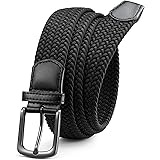The pursuit of an optimal golf swing and consistent distance often becomes a more nuanced endeavor as one progresses through their senior years. Physical changes, such as reduced muscle mass, decreased flexibility, and diminished proprioception, can significantly impact a golfer’s ability to maintain power and stability throughout the swing. This makes targeted physical conditioning not merely beneficial, but absolutely essential for sustaining performance on the course. The accompanying video offers a practical demonstration of specific balance training exercises tailored for senior golfers, aiming to address these very challenges and enhance overall game.
For senior golfers, the foundation of a powerful and stable swing is deeply rooted in lower body strength and dynamic balance. As highlighted in the video, a common issue observed among older players is a decline in swing distance, frequently attributed to weakened lower body musculature. This reduction in strength directly impacts the ability to generate ground reaction forces and effectively transfer energy through the kinetic chain during the golf swing. Consequently, efforts to improve golf performance must centrally incorporate exercises designed to fortify these foundational physical attributes, thereby mitigating the effects of age-related physiological shifts.
Enhancing Golf Performance with Targeted Balance Training for Senior Golfers
The intricate mechanics of the golf swing demand a high degree of physical coordination, power, and stability. While many factors contribute to a successful swing, the role of balance and lower body strength cannot be overstated, especially for senior golfers. These elements are pivotal for initiating the swing, transferring weight effectively, and maintaining control through impact and follow-through. A robust training regimen, focusing on balance and muscle activation, is therefore instrumental in preserving and even improving golf distance and accuracy as one ages.
A comprehensive approach to senior golf fitness acknowledges that maintaining stability throughout the swing is not solely about standing still, but rather about managing dynamic forces. During the backswing, the body must resist forces that pull it off balance, while in the downswing and follow-through, significant rotational power is generated, requiring strong core and lower body engagement. Specific exercises, such as those demonstrated, are intentionally designed to enhance both static and dynamic balance, directly translating to improved control and power on the golf course. This proactive physical conditioning helps to prevent injury and allows for a more fluid and repeatable golf swing.
Mastering Key Exercises for Golf-Specific Strength and Stability
The exercises detailed in the video are carefully selected to target crucial muscle groups and movement patterns essential for senior golfers. Each movement contributes uniquely to the overall goal of improved balance, strength, and ultimately, enhanced golf performance. A deeper understanding of the biomechanical implications of each exercise can further enhance their effectiveness, ensuring proper form and maximizing muscle activation.
Split Squats for Glute and Core Activation
The split squat is a foundational unilateral exercise that offers significant benefits for golf. As demonstrated, maintaining a straight downward trajectory is crucial, preventing the knee from tracking excessively inward or outward. This movement primarily engages the gluteal muscles of the front leg (e.g., the right glute when the right leg is forward) and the hip flexors, specifically the psoas and rectus femoris, of the trailing leg. These muscles are vital for stabilizing the pelvis and providing the power needed for the rotational forces of a golf swing.
Furthermore, the split squat demands significant core engagement, particularly when a slight abdominal contraction is employed to prevent excessive lumbar hyperextension. This activation supports a neutral spine, a critical component for safe and powerful rotation during the golf swing. The exercise mimics the staggered stance often adopted during the swing’s initiation, preparing the body to handle weight shifts and maintain balance under dynamic conditions. Consistent practice contributes to improved leg drive and rotational efficiency, paramount for increasing swing speed and resultant golf distance.
Knee Ups for Single-Leg Stability and Hip Flexor Strength
The knee up exercise, performed from a single-leg stance, is a direct challenge to static balance and proprioception. The objective is to lift one leg to a 90-degree hip flexion while maintaining an upright posture, ensuring the lumbar spine remains stable without excessive arching or rounding. This movement specifically targets the gluteal muscles of the standing leg, responsible for hip abduction and stabilization, and the hip flexors (psoas) of the lifted leg. The ability to maintain stability on one leg is directly applicable to the weight transfer phase of the golf swing, where significant time is spent on a single leg.
Incorporating a subtle abdominal brace during the knee up helps to prevent anterior pelvic tilt and lumbar lordosis, which can compromise spinal integrity and reduce the efficiency of hip flexor activation. This exercise not only strengthens the muscles surrounding the hip joint but also improves neural pathways for better body awareness and control. Enhanced single-leg stability directly translates to a more controlled backswing, a more powerful transition, and a more balanced follow-through, all contributing to a more consistent golf shot.
Hip Rotations for Dynamic Mobility and Power
Hip rotations, performed while maintaining a single-leg balance, represent a highly functional exercise for golfers. This movement involves controlled external (gai-sen) and internal (nai-sen) rotation of the hip joint. Key muscles involved include the gluteal complex for stability and external rotation, the adductor muscles for internal rotation, and the psoas for hip flexion and dynamic control. The nuanced interplay of these muscles is critical for generating rotational power and maintaining hip mobility throughout the golf swing.
The ability to smoothly and powerfully rotate the hips is a cornerstone of an effective golf swing, directly influencing clubhead speed and shot accuracy. By actively engaging in hip rotation exercises, senior golfers can improve their range of motion in the hips, enhance the strength of the rotators, and refine their balance during dynamic movements. This translates to a more fluid hip turn in the backswing and a more explosive hip drive through impact, which are crucial for maximizing golf distance and ensuring swing stability.
Beyond Core Exercises: The Critical Role of Foot Stability
While specific hip and leg exercises are foundational, the importance of foot stability and mobility is frequently underestimated, particularly for senior golfers. The feet serve as the primary interface between the body and the ground, providing crucial sensory feedback and acting as the initial point of force generation in the golf swing. Issues such as diminished arch support, reduced toe flexibility, or overall foot weakness can significantly compromise balance and the efficient transfer of power from the lower body to the club.
Engaging the intrinsic muscles of the feet, such as by actively gripping the ground with the toes, is paramount for enhancing overall balance and proprioception. Activities like using a small ball to roll under the arch or stepping on a bamboo mat (aotake-fumi) can significantly improve plantar fascia flexibility and stimulate nerve endings, fostering greater foot awareness. These simple yet effective practices strengthen the foot’s ability to act as a stable base, preventing unwanted sway or loss of balance during the dynamic phases of the golf swing. An enhanced connection to the ground translates directly into better weight transfer and more consistent golf shots, reinforcing that true balance training extends from the ground up.
Integrating Balance Training into Your Routine for Sustained Golf Performance
Incorporating this specialized balance training for senior golfers into a regular fitness routine is a proactive step towards sustained golf performance and overall well-being. It is understood that some exercises may present initial challenges, especially those requiring single-leg stability. However, gradual progression and an emphasis on proper form over sheer intensity are key. Utilizing external support, such as a wall or a golf cart, during the initial stages can greatly assist in building confidence and ensuring safety while executing the movements.
Consistency is paramount; even short, focused sessions performed regularly will yield substantial benefits over time. These exercises not only contribute to increased golf distance and improved swing stability but also play a vital role in fall prevention and enhancing general mobility, which are significant considerations for senior individuals. The sustained application of these principles will undoubtedly contribute to a more enjoyable and successful golfing experience, reinforcing the importance of senior golfer balance training as an integral component of any golfer’s preparation.










